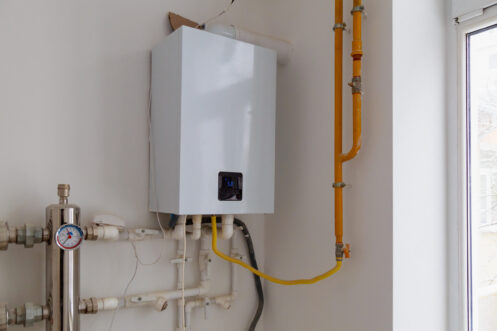Effective Strategies for Caring for Your Home's Hot Water SystemWays to Maintain Your Home's Hot Water System Functioning Well
Effective Strategies for Caring for Your Home's Hot Water SystemWays to Maintain Your Home's Hot Water System Functioning Well
Blog Article
Just how do you feel in regards to How to Maintain a Hot Water Heater in a Few Simple Steps?

Warm water is crucial for day-to-day convenience, whether it's for a revitalizing shower or cleaning recipes. To guarantee your hot water system runs effectively and lasts much longer, routine upkeep is crucial. This short article provides sensible ideas and insights on how to maintain your home's hot water system to stay clear of disturbances and expensive repair work.
Introduction
Keeping your home's hot water system might seem daunting, yet with a few easy steps, you can ensure it runs smoothly for years to find. This guide covers every little thing from understanding your warm water system to do it yourself maintenance pointers and knowing when to call in expert aid.
Value of Keeping Your Hot Water System
Normal maintenance not just extends the life expectancy of your warm water system however also guarantees it operates efficiently. Disregarding upkeep can lead to reduced performance, higher power bills, and even early failing of the system.
Indications Your Warm Water System Needs Upkeep
Knowing when your warm water system requires attention can stop major problems. Keep an eye out for signs such as irregular water temperature, unusual sounds from the heater, or rustic water.
Recognizing Your Hot Water System
Prior to diving right into upkeep jobs, it's helpful to comprehend the fundamental parts of your hot water system. Usually, this consists of the water heater itself, pipes, anode rods, and temperature level controls.
Month-to-month Maintenance Tasks
Routine month-to-month checks can help capture small concerns before they intensify.
Flushing the Water Heater
Flushing your water heater eliminates debris build-up, boosting performance and lengthening its life.
Monitoring and Changing Anode Rods
Anode rods avoid rust inside the storage tank. Examining and changing them when broken is important.
Examining and Changing Temperature Level Setups
Readjusting the temperature level settings ensures optimal performance and security.
DIY Tips for Upkeep
You can execute numerous upkeep jobs on your own to maintain your warm water system in leading problem.
Looking for Leakages
On a regular basis check pipelines and links for leaks, as these can cause water damage and greater costs.
Examining Stress Alleviation Valves
Checking the stress safety valve guarantees it operates properly and prevents extreme stress build-up.
Protecting Pipelines
Shielding warm water pipelines minimizes warmth loss and can save energy.
When to Call a Professional
While do it yourself upkeep is valuable, some problems require expert experience.
Facility Concerns Requiring Professional Assistance
Instances include major leaks, electric issues, or if your hot water heater is constantly underperforming.
Regular Expert Maintenance Perks
Specialist maintenance can consist of thorough evaluations, tune-ups, and ensuring compliance with security criteria.
Conclusion
Routine upkeep of your home's warm water system is important for effectiveness, long life, and price financial savings. By adhering to these suggestions and understanding when to seek professional help, you can guarantee a reputable supply of hot water without unanticipated interruptions.
Water Heater Maintenance Tips
Test the TPR Valve
Shut off the power and the cold-water supply valve. Place a bucket under the pipe connected to the temperature-pressure-release (TPR) valve on the top or side of the tank. (This valve opens if the tank pressure gets too high.) Lift the valve’s tab to let some water out, then let go. If water keeps flowing, drain the tank partway, unscrew the old valve with a pipe wrench, and install a new one. Check the Anode Rod
Put a hose to the tank’s drain cock and let out a few gallons of water. Now fit a 1 1/16-inch socket onto the rod’s hex head on top of the heater (or under its top plate) and unscrew the rod. If it’s less than ½ inch thick or coated with calcium, buy a new one, wrap its threads with Teflon tape, put it back in the tank, and tighten securely. Use this segmented rod if headroom above the tank is limited. Drain the Tank and Wash Out Sediment
Drain the remaining water in the tank into the bucket, then stir up the sediment on the tank’s bottom by briefly opening the cold-water supply valve. Drain and repeat until clean water comes out of the hose. Close the drain cock, refill the tank, and turn its power back on. Adjust the Temperature
Find the temperature dial on the side of the tank and unscrew its cover. Adjust the dial to 120 degrees using a flathead screwdriver. For every 10 degrees the temperature is lowered, you can expect to save up to 5 percent in energy costs. Turn the water heater off or the thermostat down to its lowest setting if you plan to be away from home for more than three days. Insulate the Pipes
Buy some self-sticking 3/8-inch-thick foam pipe insulation that matches the pipes’ diameter. Slide the foam over the hot-and cold-water pipes as far as you can reach. Insulating the cold-water pipe prevents condensation in summer. Peel the tape and squeeze the insulation closed. If the pipe is 6 inches or less from the flue, cover it with 1-inch-thick unfaced fiberglass pipe wrap. https://www.thisoldhouse.com/plumbing/21016402/how-to-maintain-a-water-heater

We had been shown that write-up about What Kind of Maintenance Do Water Heaters Need? from an acquaintance on another site. Liked our content? Please share it. Help others discover it. Many thanks for taking the time to read it.
This Resource Report this page